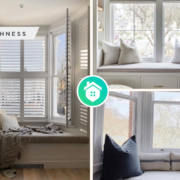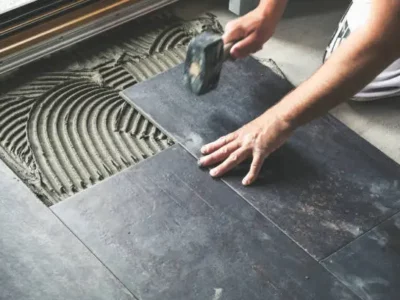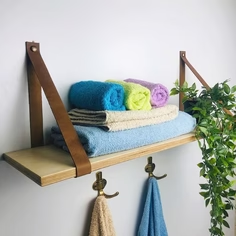Neutral color schemes—dominated by whites, beiges, grays, and soft earth tones—have long been favored for their timeless appeal and versatility. A neutral palette exudes calm, cleanliness, and sophistication. It makes it a popular choice for modern and minimalist interior design. However, living in a purely neutral space can sometimes feel sterile or uninspiring if not carefully personalized.
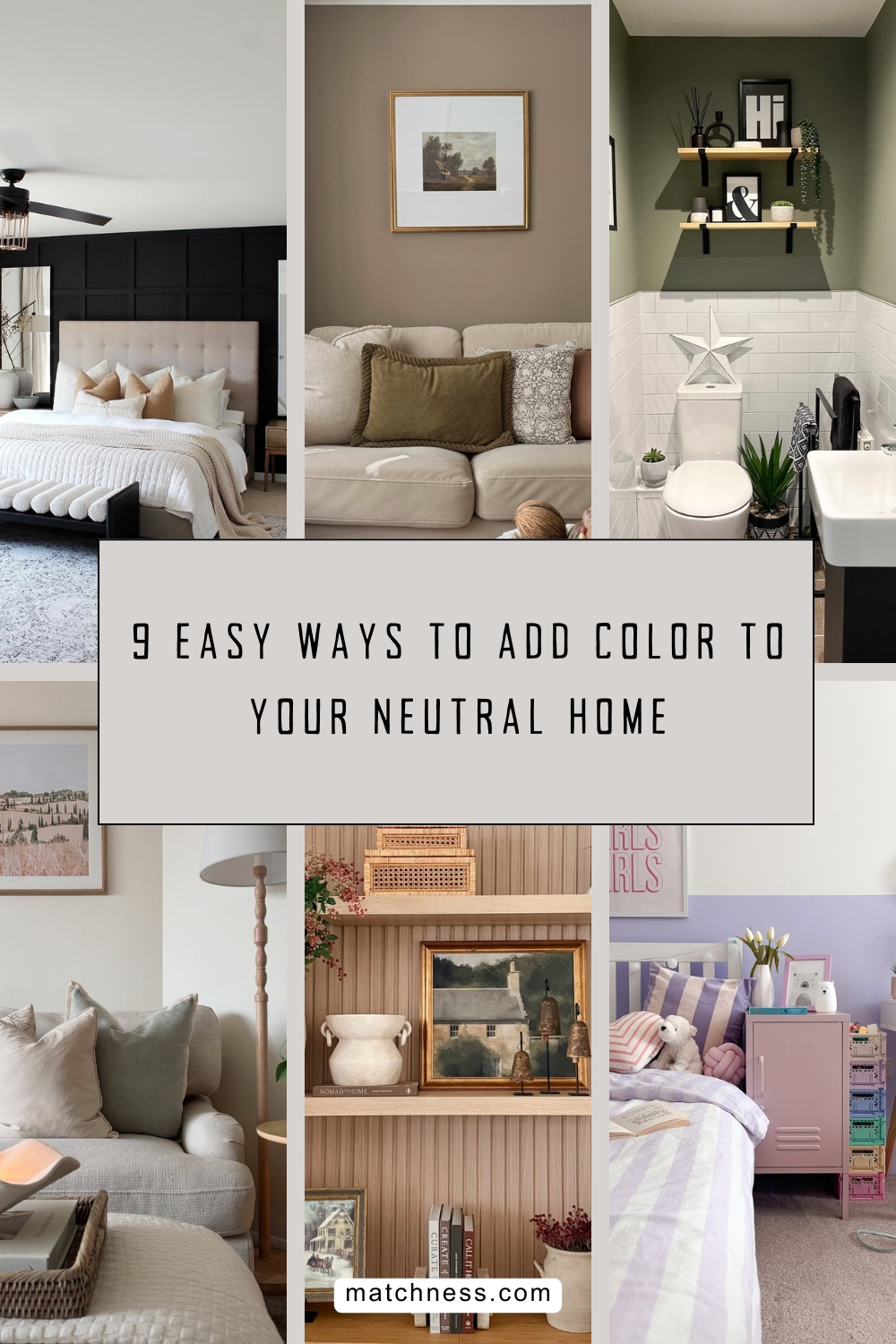
Want to add color but aren’t sure where to start? The good news is that adding color to a neutral home doesn’t require a complete design overhaul. With strategic additions and thoughtful planning, you can infuse vibrancy and character into your living space while preserving its serene foundation. So, if you’re nervous about adding color, hopefully one of these ideas will help you take the leap!
Paint a Dark Feature Wall
If you’re ready for a slightly bigger change, painting an accent wall is a great way to add color without overwhelming the entire room. Choose one wall—often the one behind a bed, sofa, or fireplace—and paint it in a vibrant or deep hue that contrasts with the other walls.
A dark feature wall can highlight architectural features and add depth to the space. Deep blues, burnt oranges, forest greens, or even sophisticated black can create a bold, modern feel. Just ensure the chosen color complements the room’s furniture and lighting.
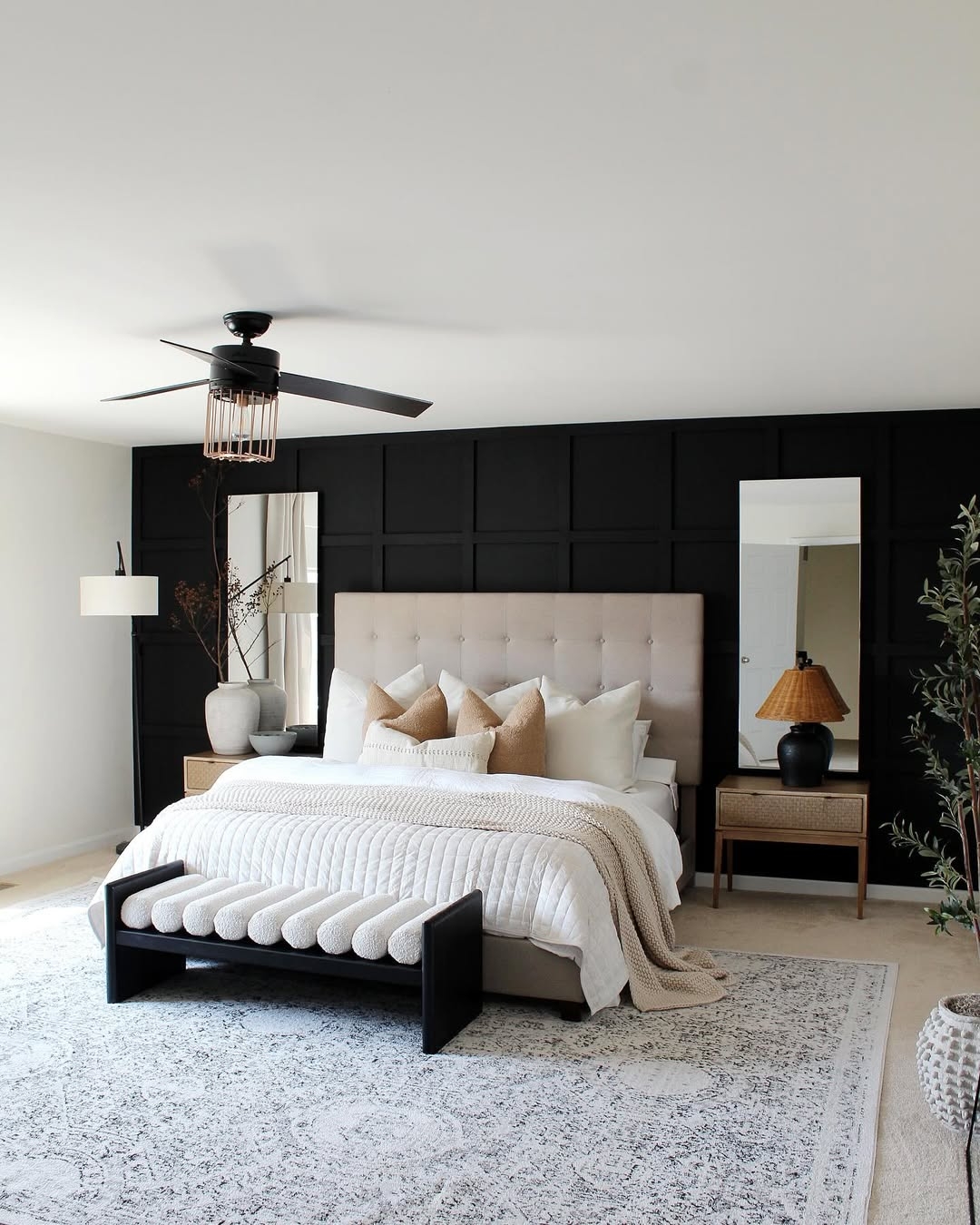
Painting a dark feature wall behind the headboard can create a dramatic focal point in the bedroom, adding depth and intimacy to the space. Dark feature walls from @myhousefromscratch
Use Color on The Bottom of the Wall
Just using color on the bottom of the walls can add color to your neutral home. Consider choosing a bold or contrasting color to make a statement without overwhelming the space. Colors like navy blue or emerald green can add a touch of sophistication and drama to your space while still maintaining a cohesive look with the rest of your decor. Or, you can use a soft and pastel hue like blush pink or light lavender for a more subtle pop of color. This simple change can completely transform the look and feel of your space without overwhelming it with too much color.
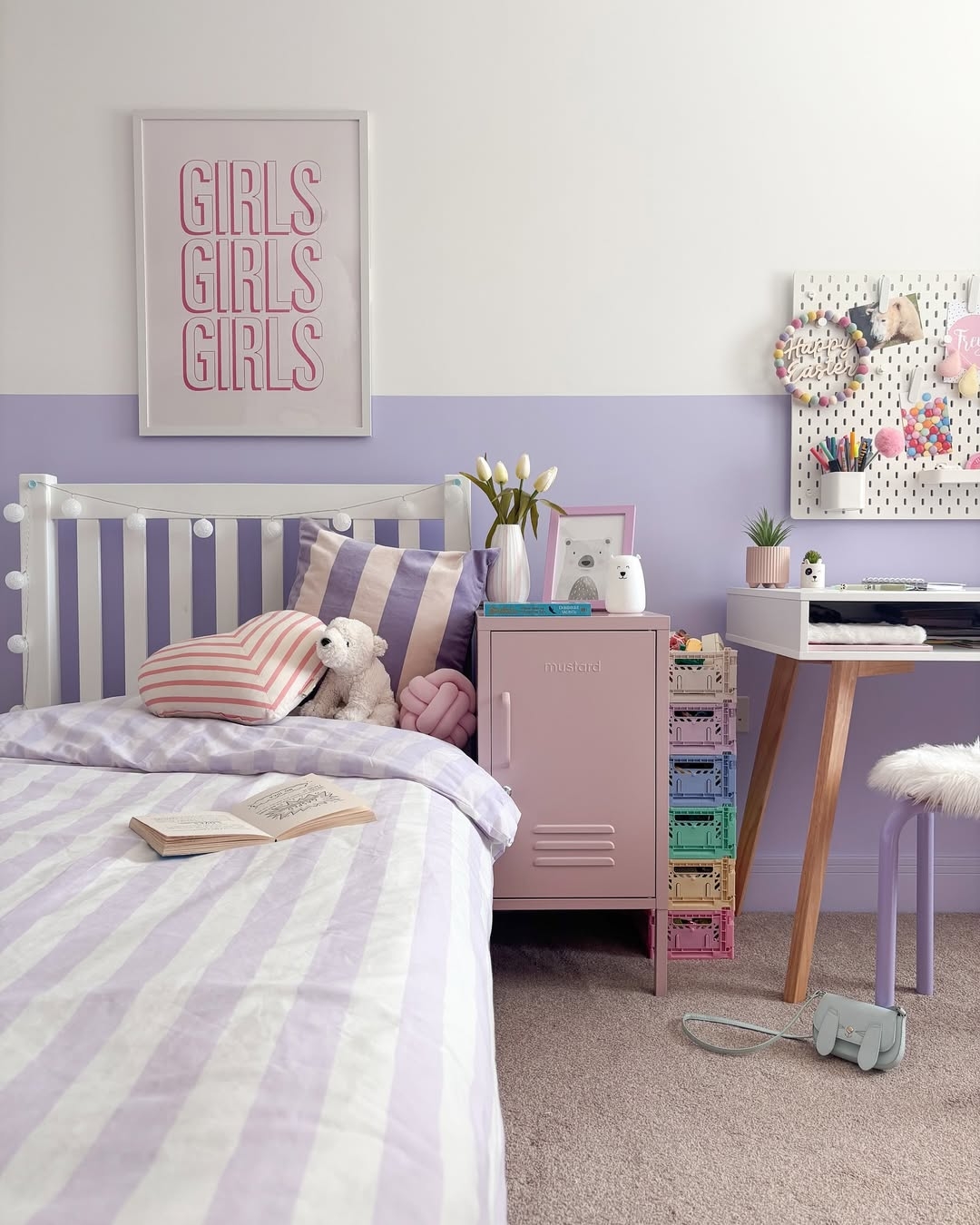
Painting half of the bedroom wall in lilac will add a pop of color and create a calming atmosphere. This soft hue can complement the neutral decor styles and bring a touch of elegance to the space. Accented walls from @no1_on_the_grove
Try in a Smaller Room
Another idea is to try in a smaller room. For example, you can add color to your neutral powder room. This can be achieved by incorporating a painting wall in a vibrant hue. You can paint the walls a bold shade of blue or green to create a striking contrast with the neutral fixtures and accessories in the room. This pop of color can instantly transform the space and give it a fresh, modern look.
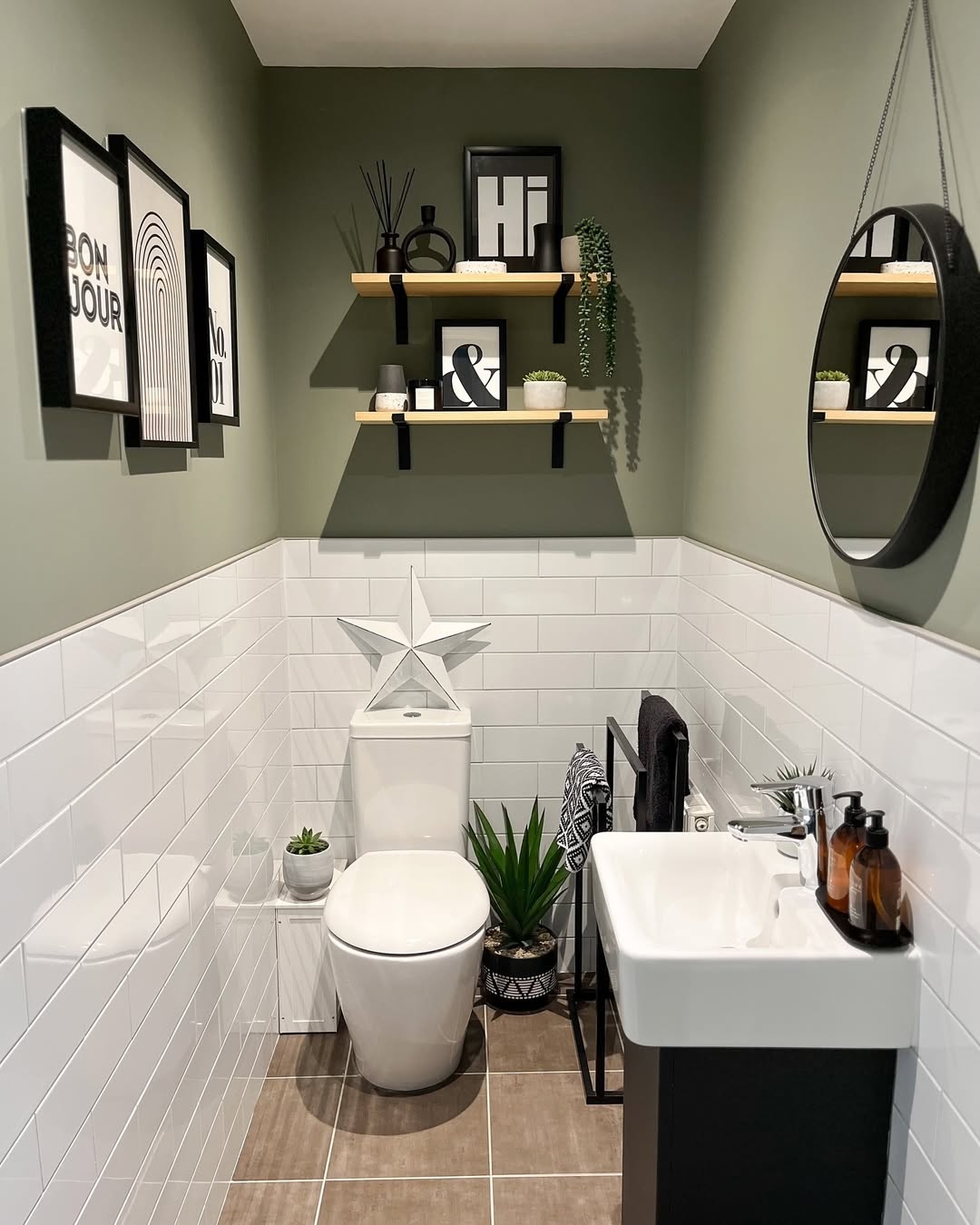
Starting to add color from the powder room is a great way to introduce a bold statement without overwhelming the entire space. It can also serve as a starting point for coordinating the color scheme throughout the rest of the home. Powder room color schemes from @no1_on_the_grove
Try Temporary Wall Treatments
For those who want to experiment without commitment, temporary wallpaper or peel-and-stick decals are an ideal solution. They come in a wide range of patterns and colors and can be removed without damaging your walls. This allows you to easily change up your decor whenever you want without the hassle of repainting or dealing with permanent wallpaper. Temporary wallpaper and decals are also a great option for renters who want to personalize their space without violating their lease agreement.
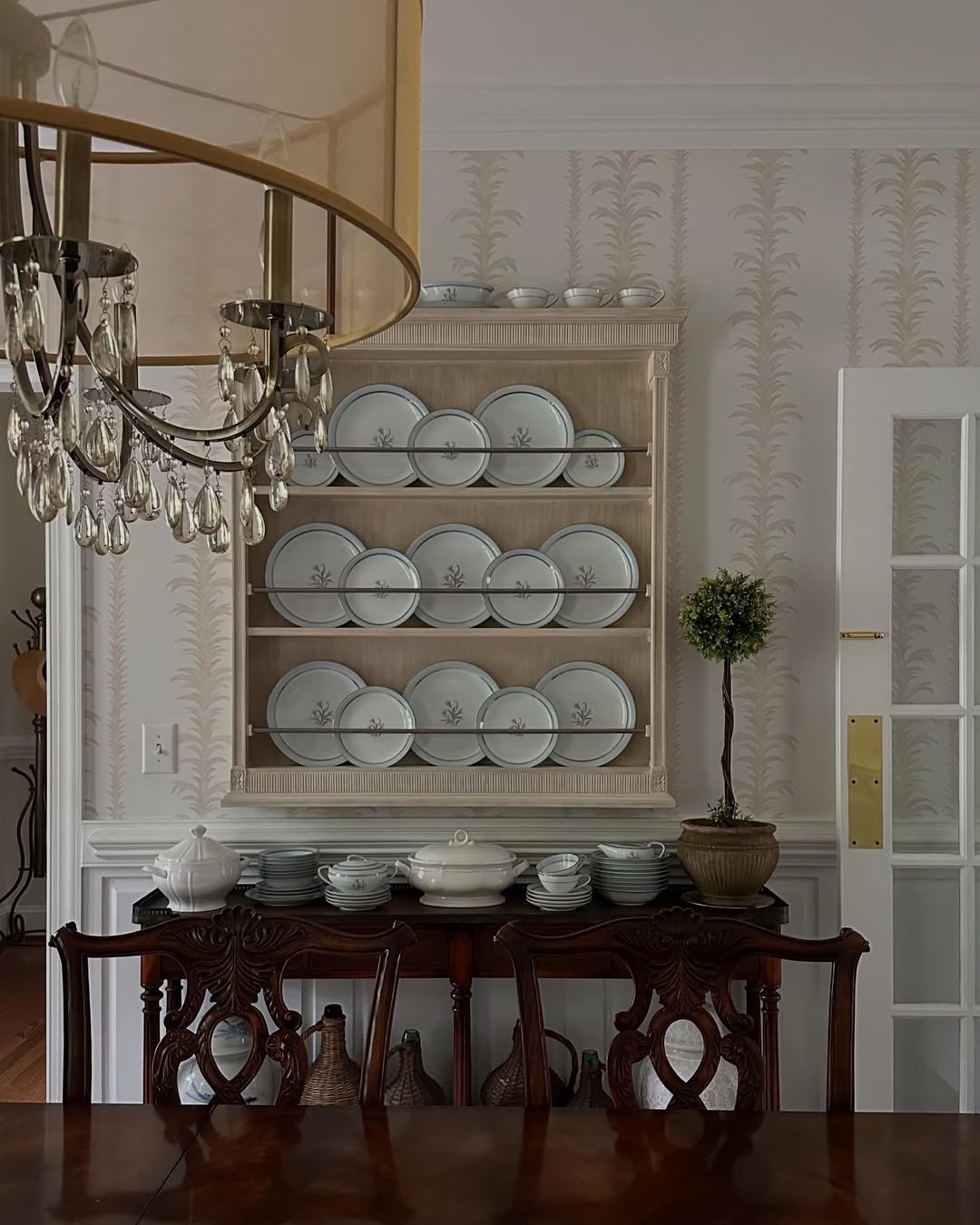
The soft, delicate wallpaper in a neutral dining room adds color, texture, depth, and cohesiveness to the space, enhancing the overall aesthetic. Wallpaper from @southern_charm_cottage
Incorporate Colorful Accent Pillows and Throws
One of the easiest and most cost-effective ways to add color to a neutral room is through textiles like pillows and throws. These soft furnishings can be swapped out seasonally or whenever you feel the need for a change. Opt for bold hues such as mustard yellow, deep teal, coral, or forest green to create contrast against neutral sofas or chairs. Mixing patterns and textures can also add dimension and interest without overwhelming the space.
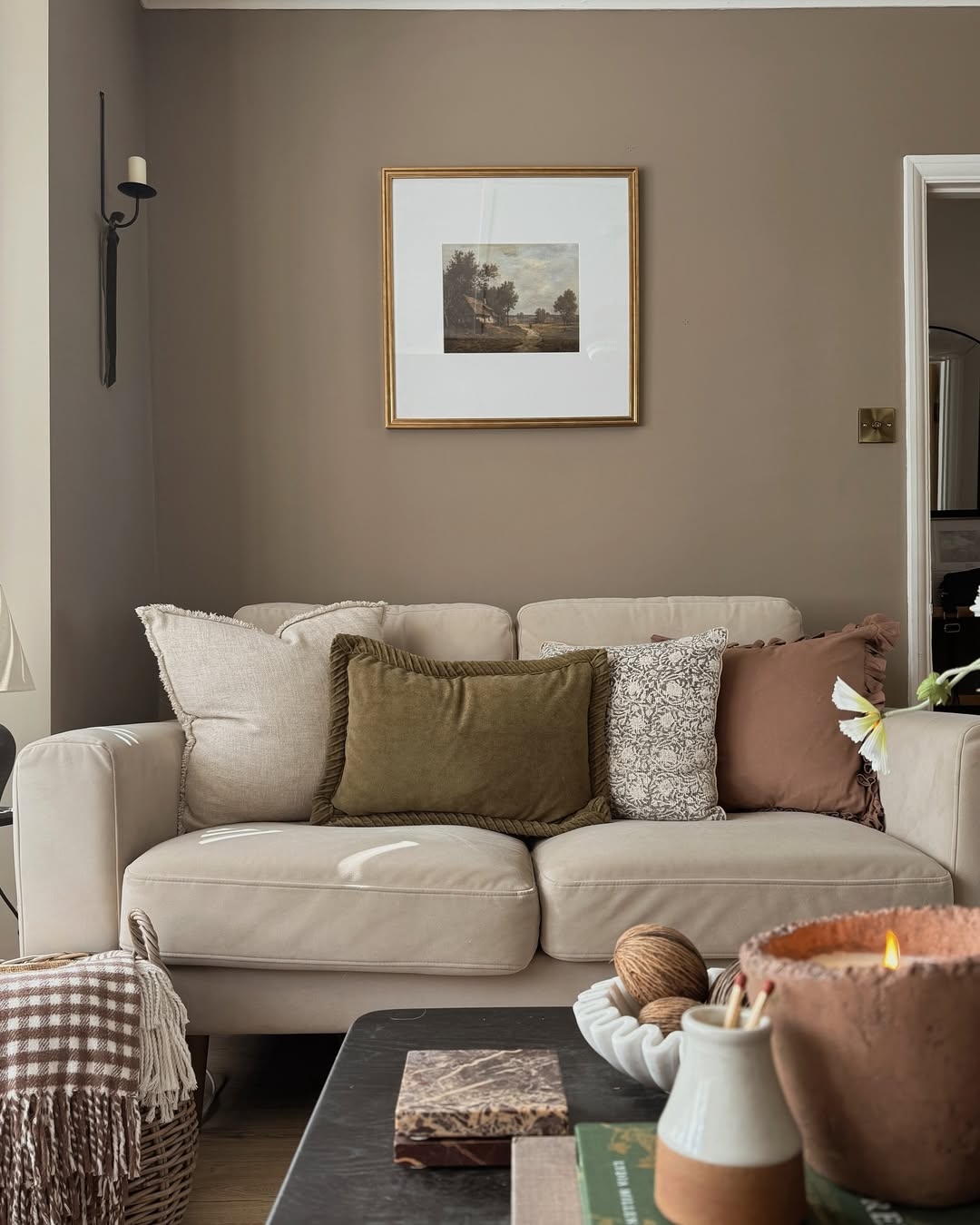
Colored throw pillows enhance the neutral living room’s atmosphere by adding vibrancy and visual interest. Incorporating textures and patterns adds texture to the space. Colored throw pillows from @athomewithfran
Use Artwork to Make a Statement
Artwork is a powerful tool in interior design and can act as a focal point in any room. A colorful painting, photograph, or print can break up a sea of beige or gray, drawing the eye and injecting personality into the room. Whether you prefer abstract, contemporary, or traditional pieces, the key is to select artwork that features tones you love and want to introduce subtly throughout the rest of the décor. Art can also reflect your tastes and serve as a conversation starter.
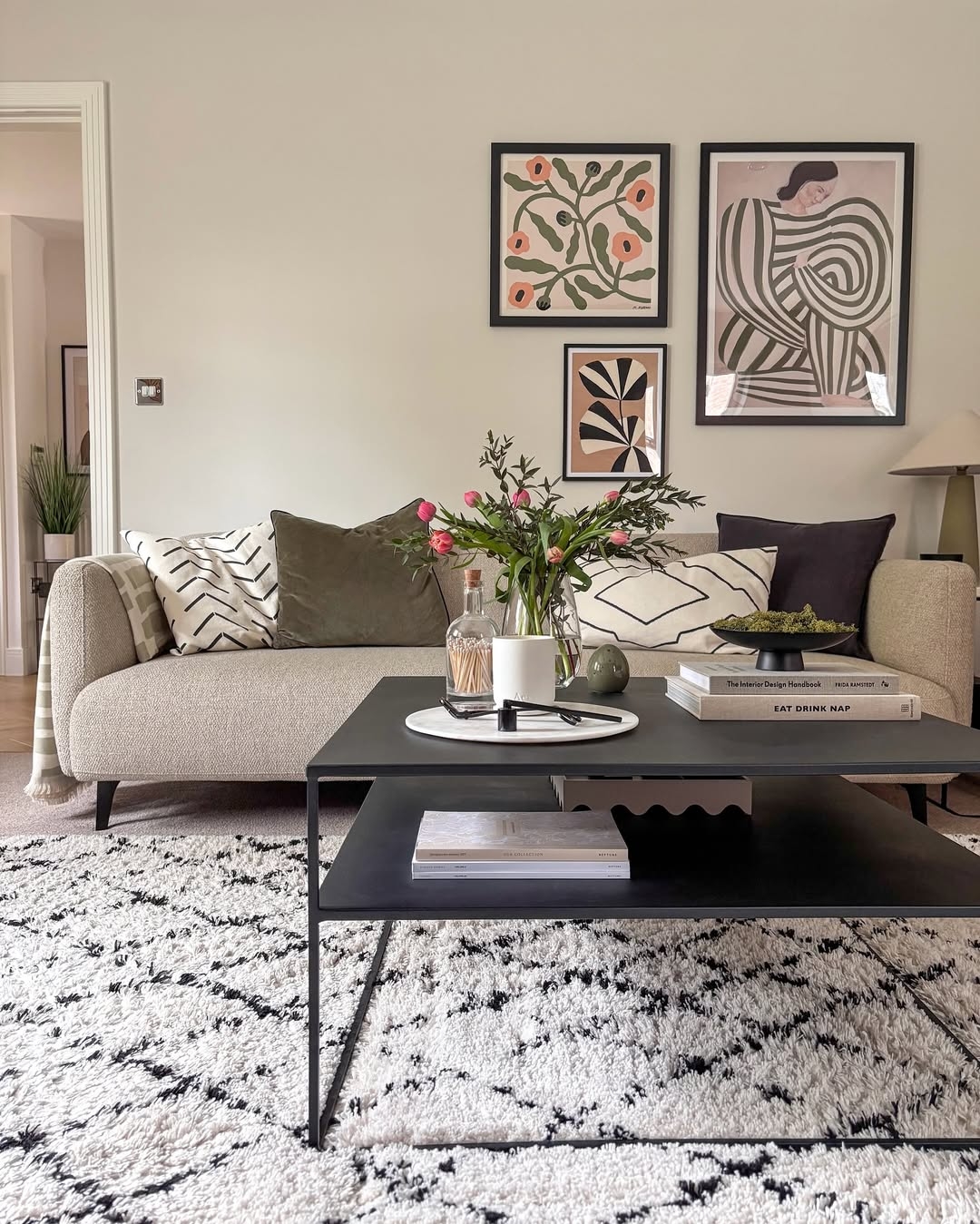
This wall art can add color to the living room and create a focal point for the space. It can also reflect your personal style and enhance the overall aesthetic of the room. Statement wall art from @no1_on_the_grove
Add Color Through Area Rugs
Area rugs not only define spaces but also offer a significant opportunity to introduce color. A vibrant or patterned rug can energize a living room, bedroom, or hallway. Consider geometric prints, floral designs, or tribal motifs with pops of color that complement your existing furniture. A rug can tie different elements of a room together while grounding the space with a central theme or hue.
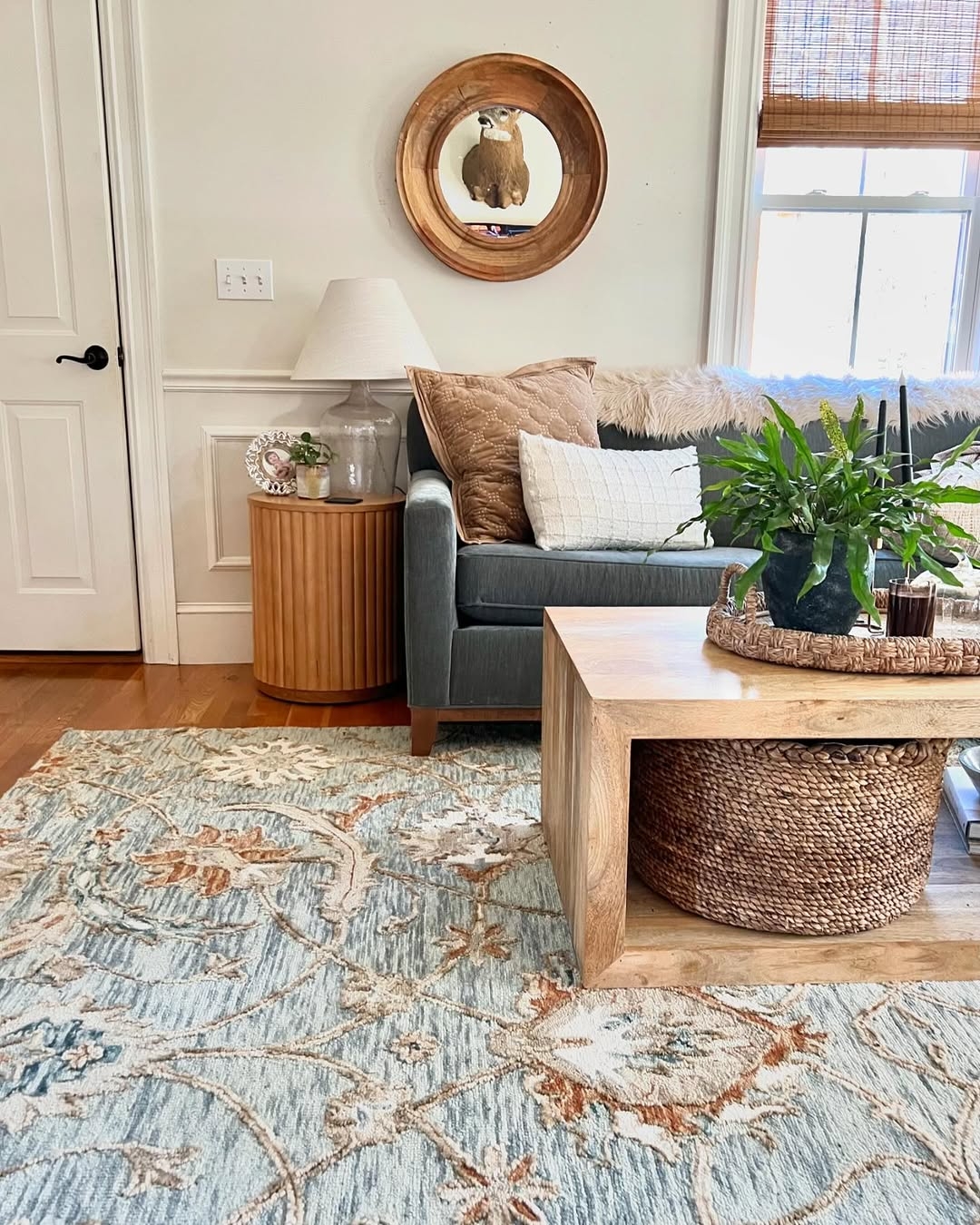
The patterned rug can add color to the living room easily. It can also bring warmth and texture to the space, making it feel more inviting and cozy. Patterned rug from @awelldressedhome_nh
Bring Nature Indoors with Plants and Flowers
Houseplants and fresh flowers are excellent for adding natural color and life to a neutral home. Greenery stands out beautifully against muted tones, adding vibrancy without being too intense. Plants like fiddle-leaf figs, snake plants, and monstera are particularly striking in minimal settings. For more vivid bursts of color, seasonal flowers like tulips, peonies, or sunflowers in decorative vases can brighten up tables, mantels, and countertops effortlessly.
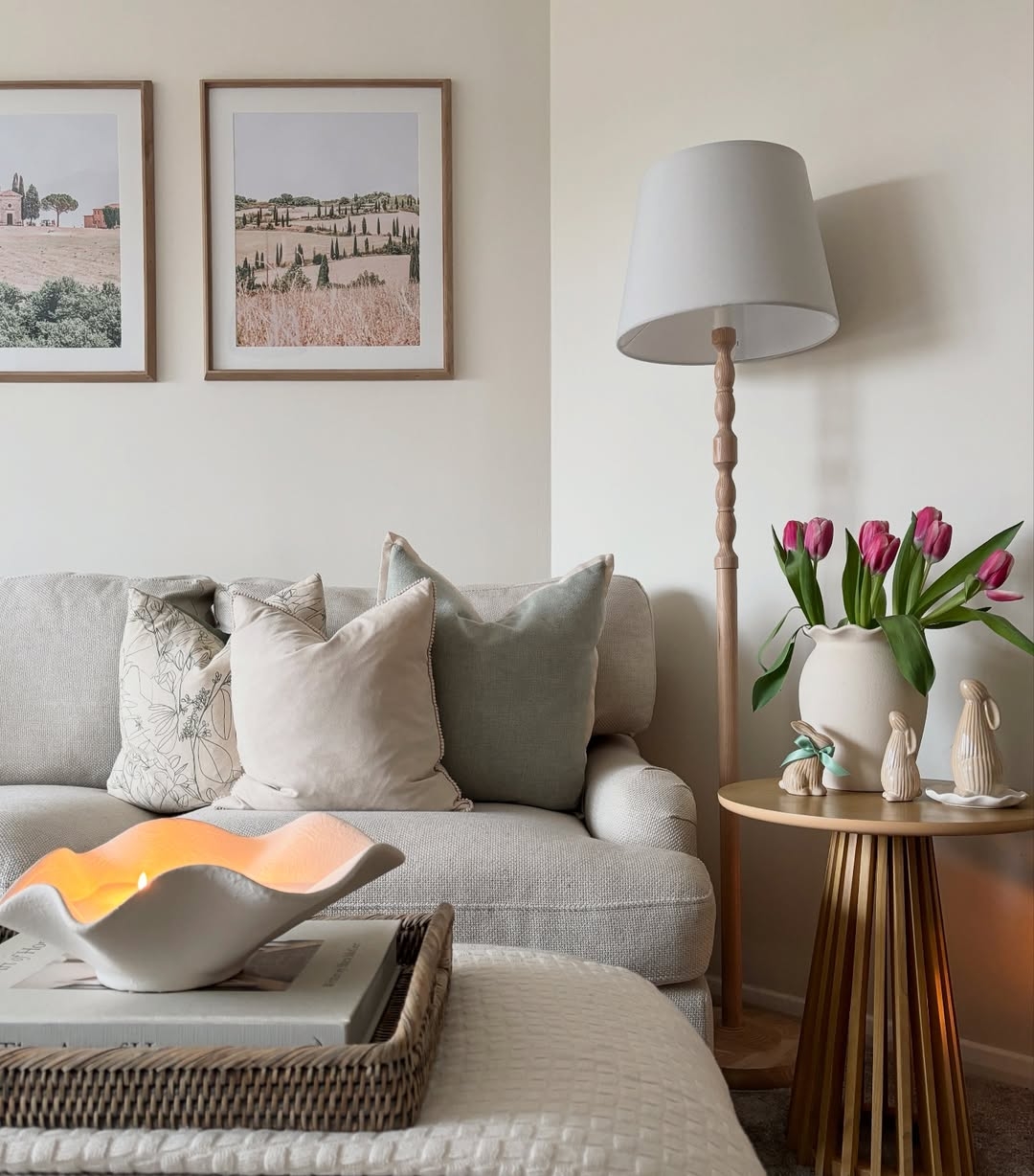
Tulip arrangements in a neutral living room create a lively atmosphere with vibrant hues, enhancing aesthetics and adding freshness and elegance. Tulip arrangements from @home.byemily
Layer Colors for Depth and Balance
Layering is a sophisticated way to incorporate color into a neutral home without disrupting its calm aesthetic. Start with a neutral base—such as walls and large furniture—then build up layers using secondary tones in rugs, pillows, and artwork. Finally, introduce tertiary accents with flowers, books, and ceramics. This approach creates a cohesive and visually appealing space with depth and variation.
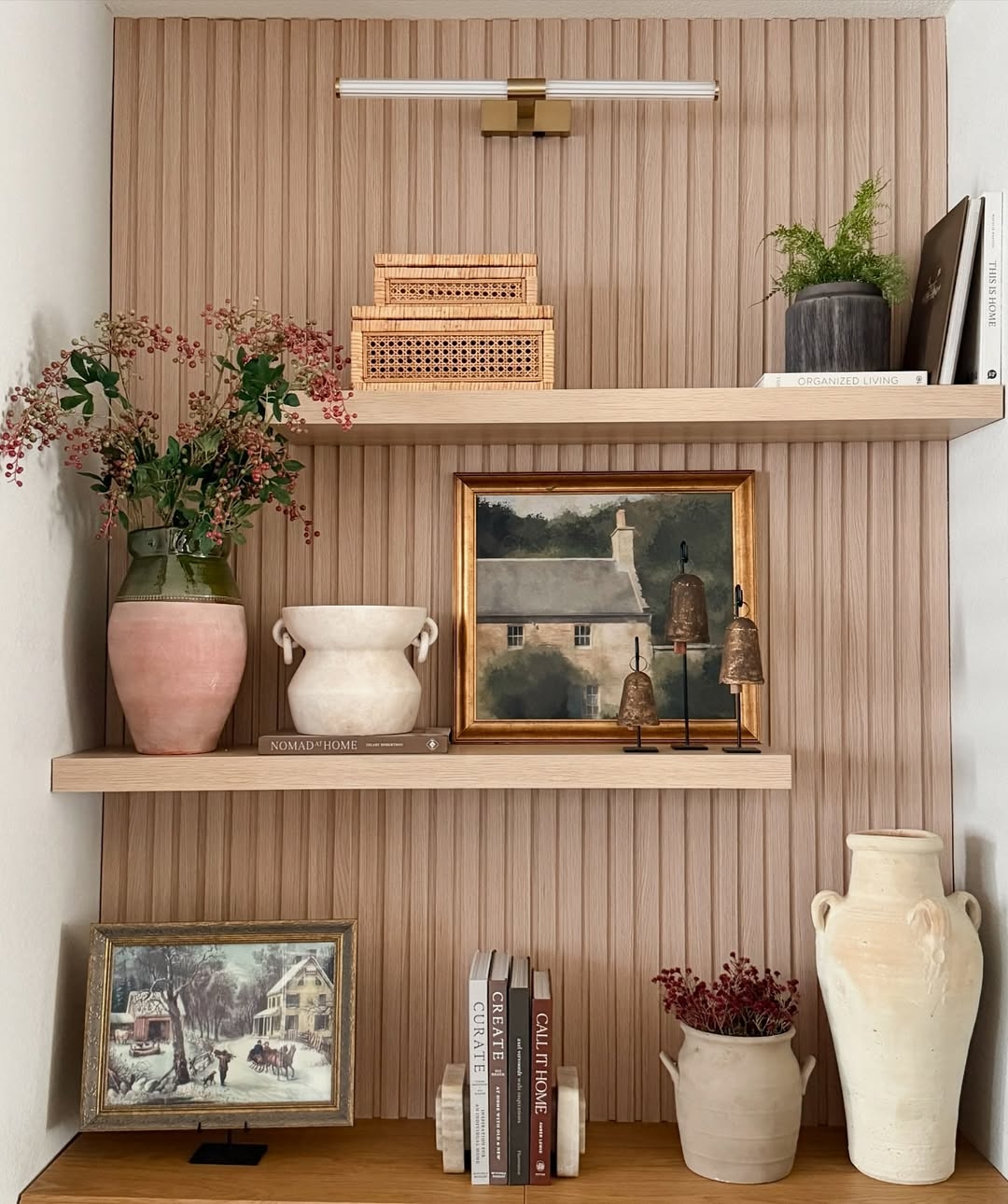
Vases, books, and other accessories can add colors and personality to the room. They can also help tie together different design elements for a cohesive look. Home accessories from @lovetodecor_home
Conclusion
Adding color to a neutral home doesn’t have to be daunting or expensive. From small touches like pillows and plants to larger changes like accent walls, there are countless ways to refresh your space and express your personal style. The key is to start with a neutral foundation and build up color gradually through intentional and well-balanced elements. Whether you prefer bold statements or subtle pops of color, these easy strategies allow you to transform your neutral home into a warm, inviting, and visually stimulating haven.



